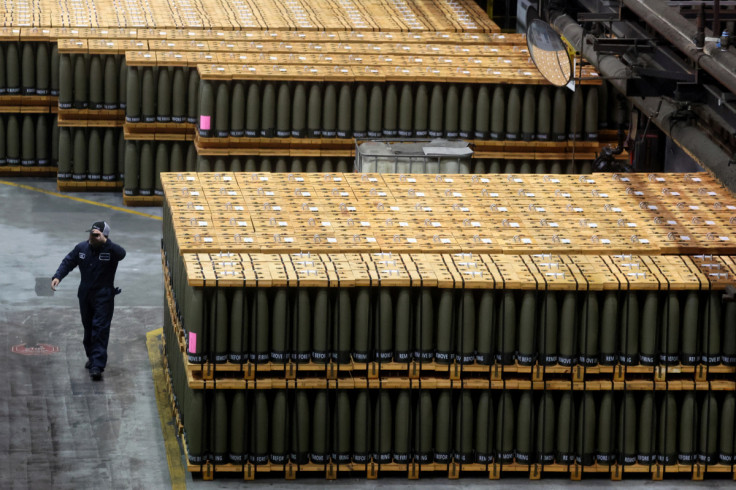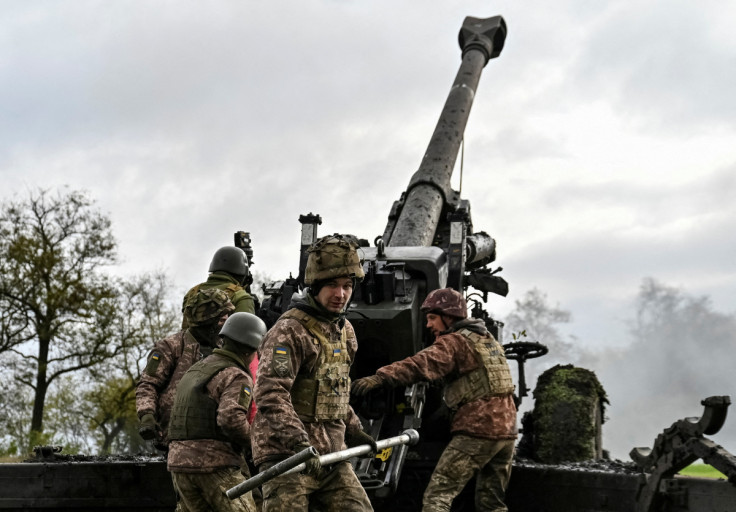Ukraine War Spurs European Demand For US Arms, But Not Big-ticket Items

European demand for U.S. weaponry is soaring, but instead of big-ticket items like jets and tanks, shopping lists are focused on cheaper, less-sophisticated items such as shoulder-fired missiles, artillery, and drones that have proven critical to Ukraine's war efforts.
Countries close to Russia like Poland, Finland and Germany are striking deals to build U.S. weapons in Europe, negotiating new deals to buy arms and looking to speed up existing contracts, according to interviews with military officials and industry executives, and a Reuters review of recent announcements by governments and defense manufacturers.
Demand is centered around basic weapons and munitions: 155-millimeter artillery rounds, air defenses, communications equipment, shoulder-fired Javelin missiles and drones, nearly a dozen European military attach?s in Washington told Reuters in a series of recent interviews.
The focus on high-volume, less costly weapons underscores how the war in Ukraine has reshaped strategic thinking in European capitals about how future conflicts could be fought.
Visions of high-tech wars more reliant on computers and machines have been replaced by the reality of relentless artillery duels and soldiers dug into muddy trenches. The one-year-old war has seen both sides expend vast quantities of artillery shells and missiles.
Ukraine's high usage rates of "both precision and unguided munitions have shown NATO countries that any future war would require much higher stocks than anticipated," said Roman Schweizer, a defense policy analyst at investment bank Cowen & Co.
The attaches said their governments were particularly keen on buying Javelins after seeing the weapon's effectiveness in Ukraine. The missiles have proven deadly against Russian tanks.
Five European countries, meanwhile, have expressed interest in buying Raytheon Technologies' precision-guided 155 millimeter artillery rounds, according to a company spokesperson, who declined to name them. The rounds are accurate to within 12 feet (4 meters) and have a range of 20 miles (32 km).
The interest from the five countries has not been previously reported. The company already sells to three other European nations.
Expressions of interest are the first step in a multi-step acquisition process that includes approval from the United States government and negotiations between the buyer and weapons contractor. It can be a year or more before a weapon is actually delivered.
Several of the military attach?s, who declined to be named because they were not authorized to speak to the media on behalf of their governments, said their countries have been making sure payments to defense contractors have been on schedule, hoping to forestall any delays. The weapons purchases are now a domestic policy priority in their countries, they said.
U.S. arms makers have in the past complained about late customer payments on calls with investors.
DRONES BIG AND SMALL
Small drones and bigger unmanned aircraft, which cost about $20 million each without sophisticated sensors, cameras and other "extras," have also appeared on shopping lists.
Finland and Denmark began talks with General Atomics after Russia invaded Ukraine last February, a source familiar with the discussions told Reuters. They want to buy a small number of MQ-9B SeaGuardian drones that can be used for maritime and land surveillance.
A Finnish defense ministry spokesperson declined to comment. A Danish defense ministry spokesperson said they have begun the process to buy at least two "long range, long endurance Remotely Piloted Aircraft System(s)" to strengthen "military capacities in the Arctic," without naming any companies.
Poland, which has been eager to get its hands on the same model drones, just received two of the previous generation model on lease from General Atomics until they get U.S. approval to buy the new ones, according to two sources familiar with the situation.
Defense minister Mariusz Blaszczak confirmed the delivery, although not the number, in a Feb. 12 tweet that said they will be used to surveil the country's eastern border, which it shares with Ukraine and Russian ally Belarus.
Some European countries are also keen to begin producing U.S. weapons on their soil because it would reduce dependency on foreign imports and lower purchasing costs.
In Germany, arms maker Rheinmetall is ready to boost the output of tank and artillery munitions and may start producing High Mobility Artillery Rocket System (HIMARS) mobile rocket launchers, which have had great success targeting Russian positions, CEO Armin Papperger told Reuters.
The system is currently produced by Lockheed Martin Corp in Camden, Arkansas. It is not clear whether the system would be produced under license, a joint venture or some other arrangement.
A Lockheed Martin spokesperson declined to comment directly on the possibility of Rheinmetall beginning production of HIMARS. Lockheed Martin's Eastern European business development manager for several missile programs, Rita Flaherty, said the company was "exploring co-production and technology transfer with several international partners."
Latvia, too, is interested in co-producing U.S. munitions. "We recognize the benefits provided by local production of large caliber munitions," military affairs spokesperson Roberts Skraucs said in a statement to Reuters.
Expectations remain high that European fears of Russian aggression will still generate orders for the biggest, multibillion dollar U.S. weapons like fighter jets and expensive missile defense systems with sophisticated radar. For more expensive arms, the first orders are expected to be used to backfill equipment sent to Ukraine by Poland. Slovakia, for example, has said it is ready to send its MiG-29 jets to Ukraine. A likely replacement would be Lockheed Martin's F-16, which cost about $65 million each.
Investors banking on soaring demand for U.S. weapons have boosted share prices of the biggest U.S. defense contractors - adding $35 billion in market value - since the invasion of Ukraine began.
ARTILLERY STILL KEY
Demand is particularly high for 155 millimeter artillery shells. The war in Ukraine has highlighted the continued importance of artillery in helping to overwhelm enemy positions or thwart troop advances. The U.S. last year shipped more than 1 million 155 millimeter shells to Ukraine, a standard round that costs the U.S. Army about $800 each.
The U.S. production goal for 155 millimeter rounds has tripled from 30,000 shells a month to 90,000 a month over the next two years, according to an Army official. The huge increase reflects the need to restock U.S. supplies as well as those of allies including Norway, Canada, Finland, France, Germany and Italy, who sent some of their stocks to Ukraine.
"It has really hit home that this is an industrial-style war," said Seth Jones with the Center for Strategic and International Studies in Washington, referring to a conflict that requires a high volume of weaponry in a short period of time.
Countries also realized early on in the Ukraine conflict the importance of having the Javelin anti-armor missile in their armories, which frequently appeared in news reports of Ukraine's destruction of Russian armored columns.
In April, Lithuania said it had set aside 1 billion euros for Javelins and other weapons. In May, Lockheed said it was doubling production and later in the month won, alongside its production partner Raytheon, a $309 million order for more than 1,300 Javelin missiles for Norway, Albania, Latvia as well as to restock U.S. supplies sent to Ukraine. In August, the United States approved a $300 million order for Britain.
Training for Javelins is relatively quick, compared to the learning required for more sophisticated platforms like tanks and planes, and the weapons themselves are relatively inexpensive. The medium-range missiles guide themselves after being launched, allowing the shooter to take cover. A single Javelin costs the U.S. Army about $263,000.



© Copyright Thomson Reuters 2025. All rights reserved.





















